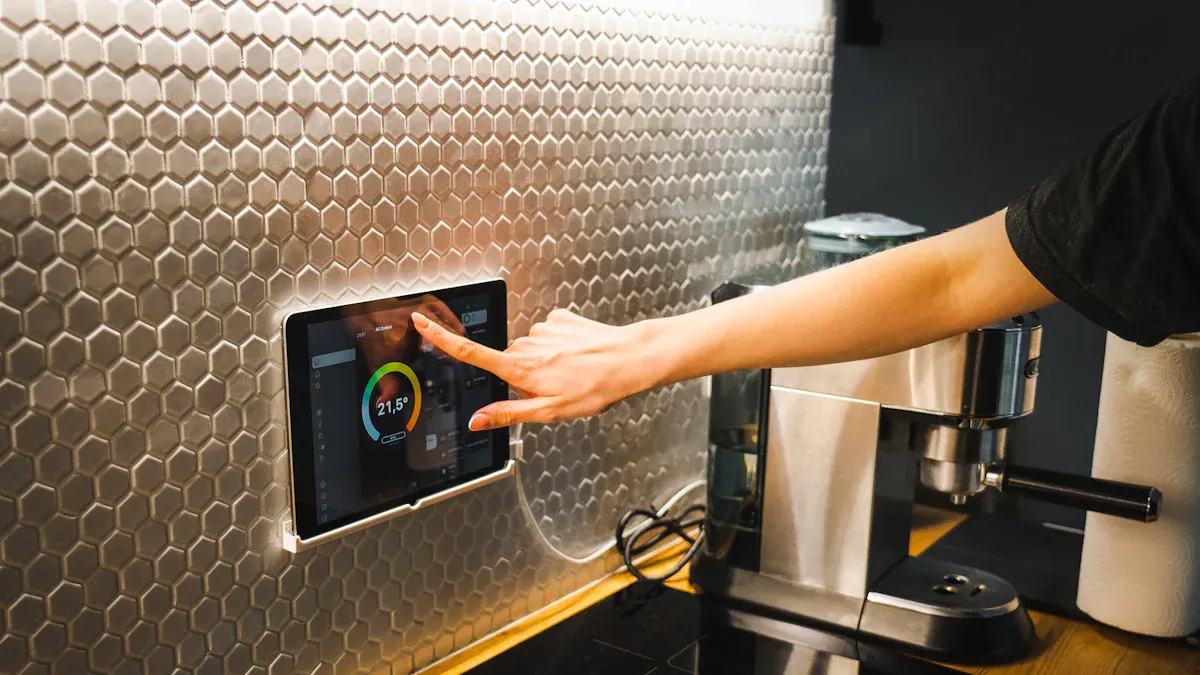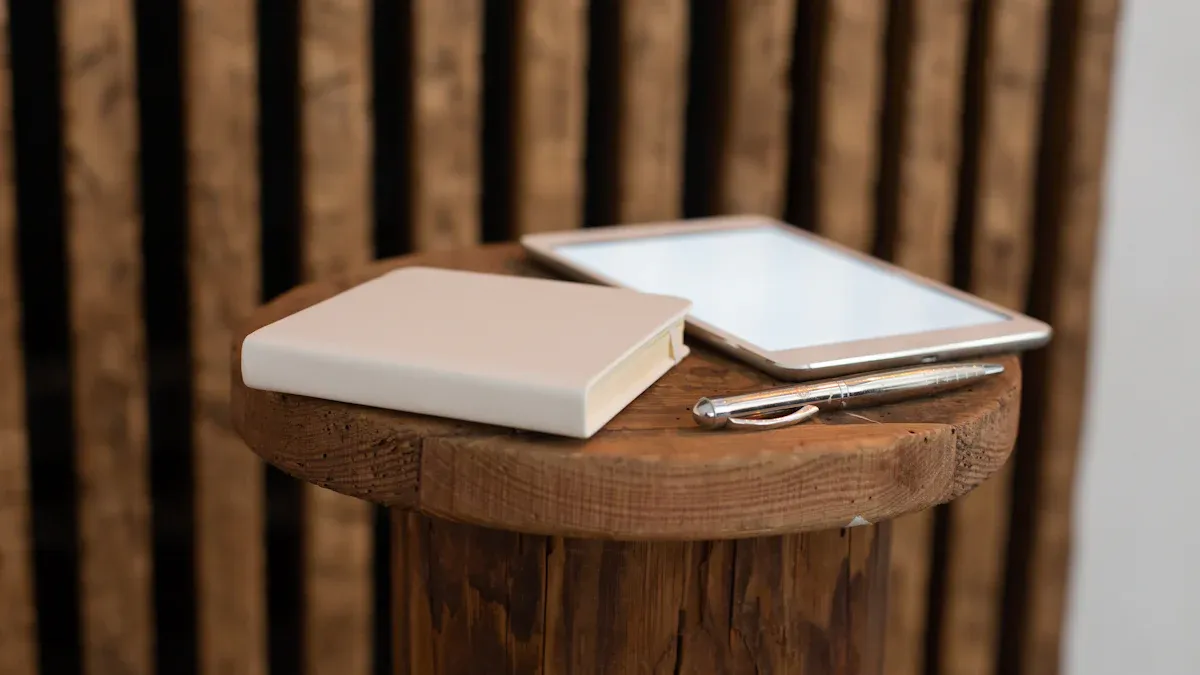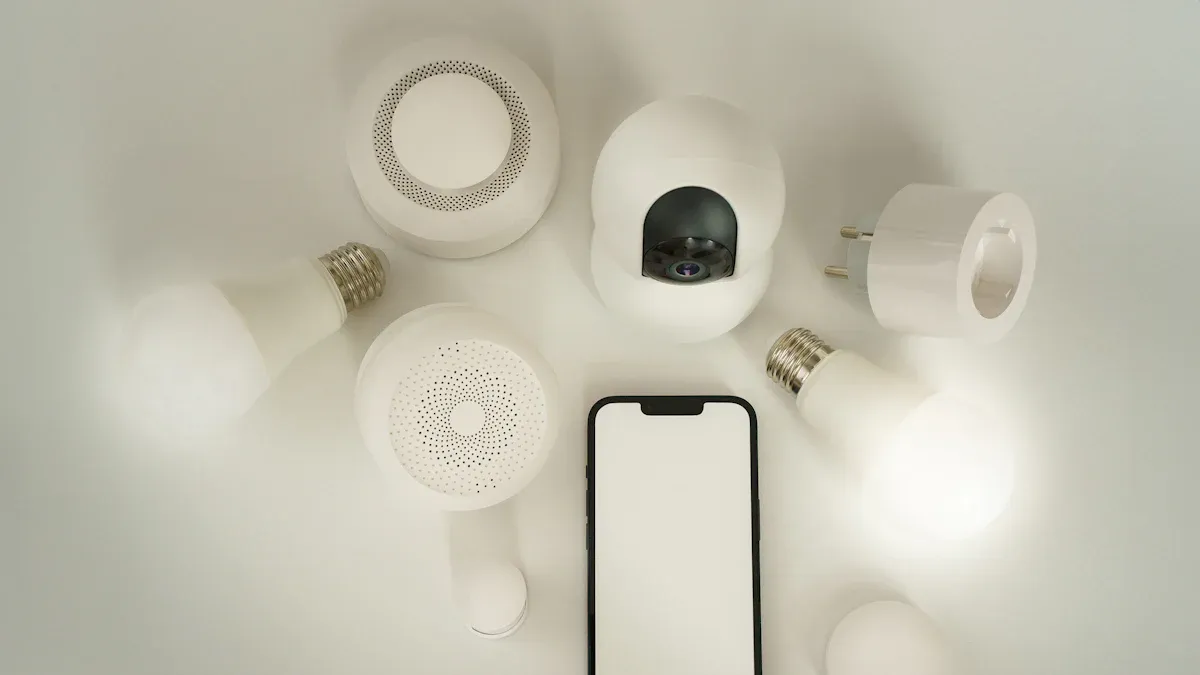Smart Home Display Setup Made Easy for Everyone

You can set up a smart home display in just a few simple steps. First, pick a display that works with your devices. Next, unbox and plug it in. Connect it to your Wi-Fi, sign in to your account, and start linking your lights, cameras, or sensors. Many people worry about compatibility or weak Wi-Fi, but using a system that supports Matter and a strong signal can help. You can even create your own custom dashboard to make everything feel just right.
Key Takeaways
Pick a smart home display that works with your devices. This helps everything connect easily.
Put your display where the Wi-Fi signal is strong. This stops problems when you set it up.
Try using voice commands with your smart home display. You can control devices easily and make your home smarter.
Change your dashboard to show what is important to you. You can choose what you want to see and use first.
If you have setup problems, try simple troubleshooting steps. These steps can fix the issue fast.
Choosing Your Smart Home Display
Popular Display Types
There are many smart home displays to pick from. Some are small and fit on a table. Others are bigger and good for the living room. The Amazon Echo Show 5 is nice for bedrooms or kitchens. The Echo Show 15 has a big screen and is great for families. You can put it on a wall or on a counter. These displays let you use your smart home devices by tapping or talking.
Compatibility Considerations
Check if your smart display works with your other devices before buying. Some displays work best with Google Home. Others are better with Amazon Alexa or Home Assistant. If you want to use many brands, find a display that can connect to lots of devices. This helps you control everything from one spot. Here is a table that shows what is important:
Factor | Description |
|---|---|
Multi-device integration | Lets you control smart home products from different brands. |
Advanced touchscreen interface | Gives you a bright, easy-to-use screen with simple navigation. |
Energy efficiency with PoE | Makes setup easier and saves energy by using Power over Ethernet. |
Tip: Always look at the box or product page to see what platforms the display works with. This helps you know what to expect.
Where to Buy
You can buy smart home displays at many places. Big stores like Best Buy, Walmart, and Target have lots of choices. Online shops like Amazon and the official Google and Amazon sites have many options too. Shopping online lets you read reviews and compare features. If you want to see the display before buying, go to a local electronics store.
Unboxing and Setup Steps

What’s in the Box
When you open your smart home display, you’ll find a few important things inside. Here’s what you should look for:
Door and window sensors
A motion sensor
Power adapter and cables
Quick start guide or instruction booklet
Take a moment to check that everything is there. If something is missing, contact the store or manufacturer right away.
Powering On
Ready to get started? Plug the power adapter into your display and connect it to a wall outlet. You’ll see the screen light up after a few seconds. Some displays show a welcome message or ask you to pick your language. Follow the instructions on the screen. If your display has batteries for sensors, put them in now. Make sure each sensor turns on and connects to the main hub.
Tip: Place your display in a spot with a strong Wi-Fi signal. This helps you avoid connection problems later.
Launching the Smart Home Dashboard
Once your display powers up, you’ll want to find the smart home dashboard. Most displays have a simple menu. Tap the “more” button or look for a home icon. Select “Smart Home” from the options. The dashboard lets you see and control your devices. You can add new devices, check sensor status, and set up routines.
Here are a few expert tips to help you avoid common mistakes:
Make sure your devices work together. Stick to one ecosystem if you can.
Use strong passwords and turn on two-factor authentication for your Wi-Fi.
Start simple with automation. You can add more features later.
Don’t forget to check your internet strength before setup.
If you follow these steps, you’ll have your smart home display up and running in no time!
Connecting to Wi-Fi and Accounts
Wi-Fi Setup
You need a strong Wi-Fi connection for your smart home display to work well. Start by choosing a spot close to your router. This helps you avoid weak signal spots or dead zones. If you notice slow speeds or your display keeps dropping the connection, you might have one of these common issues:
Issue Type | Description |
|---|---|
Slow speeds | Long load times or lag, often from distance or too many devices. |
Intermittent connection | Wi-Fi cuts in and out, usually from interference or router problems. |
Older devices may not work with new routers. | |
Weak signal spots | Some rooms have little or no Wi-Fi signal. |
If you run into problems, try moving your display closer to the router or use a Wi-Fi extender. Make sure your system supports the latest Wi-Fi standards for the best results.
Account Sign-In
After you connect to Wi-Fi, you will sign in to your account. This step links your display to your smart home system. Always use a strong password and turn on two-factor authentication if you can. Here are some smart security tips:
Security Measure | Description |
|---|---|
Change default passwords | Pick long, unique passwords for each device. |
Enable two-factor authentication | Adds extra protection to your account. |
Keep firmware updated | Update your display to fix security bugs. |
Isolate smart devices | Use a separate Wi-Fi network for your smart home system. |
Disable unnecessary features | Turn off features you do not use. |
Avoid suspicious links | Stay away from strange links and public Wi-Fi. |
Monitor connected devices | Check which devices are connected and manage permissions. |
You keep your home safer by following these steps.
App Installation
Most smart home displays work with a companion app. You can find these apps on iOS, Android, and even Wear OS. For example, Home Assistant works on both Apple and Android devices. Download the app that matches your system. The app helps you manage devices, set up routines, and even use special features like Kiosk Mode. Kiosk Mode locks your display to show only your dashboard, which is great if you want a simple, focused screen.
Tip: Finish the app installation before you add more devices. This makes the whole setup process smoother and helps your system run better.
Now you are ready to move on to linking your smart devices!
Linking Devices to Your Smart Home Display

Adding Lights and Thermostats
You can make your home brighter and more comfortable by adding smart lighting and thermostats to your smart home display. Here’s how you do it:
Pick your smart home platform. You might use Google Home, Amazon Alexa, or Apple Home. Make sure your smart devices work with your platform.
Put each smart device in pairing mode. Open the companion app on your phone or tablet. Add your smart lighting and thermostat to your account.
Set up your control panel. You can use a smart home display or a tablet with the app installed. This lets you manage your smart devices from one place.
Check that everything works. Test your smart lighting and thermostat. Try turning the lights on and off or adjusting the temperature. If something doesn’t work, use the app to troubleshoot.
Tip: Start with one or two smart devices. Once you feel comfortable, you can add more and explore home automation features.
Integrating Cameras and Sensors
You can boost your smart security by connecting cameras and sensors to your smart home display. Many people use voice assistants like Alexa or Google Assistant to make this process easier. Here are some things you can do:
Add cameras to your system. Use the app to link each camera. Place cameras where you want extra security, like the front door or backyard.
Connect sensors for doors, windows, or motion. These smart devices help you know when someone enters or leaves your home.
Use your smart home display to see live video or sensor alerts. You can check who’s at the door or if a window opens.
Note: Voice assistants are becoming more popular. In 2019, over 111 million people in the U.S. used them. You can use voice commands to control smart security features and get updates from your smart home display.
Using Voice Assistants
Voice assistants make managing your smart home display easy and fun. You can talk to your system and control smart devices without touching anything. Here are some things you can say:
Secure your home: “Hey Google, lock all the doors.”
View cameras: “OK Google, show me the backyard camera.”
Get a summary of events: “Hey Google, catch me up on what happened at home today.”
Search camera history: “Hey Google, did something eat my plants in the backyard?”
Prepare for the day: “Hey Google, what’s on my calendar tomorrow?”
You can use these commands with your smart home display to make life easier. Voice assistants help you manage smart devices, check smart security, and control smart lighting. You can even set up routines for home automation, like turning off all the lights at bedtime.
Tip: Try different voice commands to see what works best for you. Your smart home display can learn your habits and make your daily routine smoother.
You can link many smart devices to your smart home display. Use the companion app and voice assistants to keep everything organized. With smart lighting, smart security, and home automation, you can make your home safer and more comfortable.
Customizing and Troubleshooting
Personalizing Your Dashboard
You can make your smart home display feel like it belongs in your home. Start by changing the look and layout of your dashboard. Most smart home displays let you pick what you want to see first. You might want to see your lights, thermostat, or cameras right when you wake up. You can move tiles around, add shortcuts, or even choose a background that matches your style.
If you use Home Assistant, you get even more ways to personalize your dashboard. Here are some of the things you can add:
Area cards to group devices by room
Buttons for quick actions
Calendars to keep track of events
Clocks and weather forecasts
Energy cards to watch your power use
Gauges and graphs to see trends
Media controls for music or TV
Pictures and maps
To-do lists and reminders
Tip: Try adding a weather card or a clock to your main screen. It helps you start your day with the info you need.
You can also set up routines. For example, you can make all your smart home devices turn off at bedtime with one tap. Personalizing your dashboard makes your smart home display work just the way you want.
Creating Custom Dashboards
You might want more control over how your smart home display looks and works. Custom dashboards let you build your own control center. You can use different platforms to do this. Some people even turn old tablets into smart home dashboards. They use apps like Alexa or Home Assistant to group devices and set up routines.
Here is a table that shows some popular platforms and what they are best for:
Platform | Best For | Features |
|---|---|---|
Arduino IoT Cloud | Beginners and makers | Drag-and-drop widgets, secure sync |
Blynk | Mobile-first projects | Custom app dashboards |
ThingsBoard | Open-source server | Advanced charts and analytics |
Node-RED Dashboard | Visual workflows | Modular blocks and graphs |
Ubidots | Scalable cloud dashboards | Industrial-grade visualization |
AWS / Azure IoT | Enterprise solutions | Full-scale monitoring & analytics |
You can also pick from many types of widgets. Here are some examples:
Widget Type | Purpose | Example Use |
|---|---|---|
Gauge / Meter | Shows current value | Room temperature |
Line Chart | Shows data trends | Temperature over time |
Switch / Button | Controls devices | Turn on a lamp |
Slider | Adjusts settings | Set fan speed |
Indicator Light | Shows status | On/off for a device |
Map Widget | Shows location | Track a device or person |
Custom dashboards help you see and control your smart home devices in the way that works best for you. You can even use your old iPad or tablet as a smart home display. Just set it up with your favorite app and organize your devices into groups that make sense for your family.
Common Setup Issues
Sometimes things do not work as planned. You might have trouble connecting your smart home display to Wi-Fi or a device might not respond. Here are some steps you can try if you run into problems:
Double-check your Wi-Fi password. Make sure you enter it correctly.
Look at your router settings. The router should give out IP addresses automatically.
Make sure your smart home display is connected to the right Wi-Fi network.
If you still have trouble, reboot your Wi-Fi router.
Try a factory reset on your smart home display if nothing else works.
Set up your device again using the companion app.
If your thermostat or another smart home device will not connect, try this:
Turn the device off and back on. For a thermostat, you can remove it from the wall plate and put it back.
Wait five minutes. Sometimes it just needs a little time to reconnect.
If it still does not work, try connecting to a different Wi-Fi network.
Note: Most problems have simple fixes. If you get stuck, check the quick start guide or the help section in your app.
You can solve most setup issues with a few easy steps. If you keep having trouble, reach out to customer support for your smart home devices. They can help you get everything working again.
You can set up your smart home display in a few easy steps. Look at this table to see what is important:
Factor | Description |
|---|---|
Compatibility | Works with your devices and platforms |
Personalization | Lets you make your own dashboard |
Security | Keeps your data safe |
Cost | Balances price and long-term benefits |
Try changing your dashboard to match your style. If you want help, check out these resources:
Battery-driven E-Ink Weather/Sensor Dashboard
Hack Your Kindle or Old E-Reader Into an Always-on Dashboard
Are you ready to share your setup or have questions? Leave a comment below! 😊
FAQ
How do I reset my smart home display if it stops working?
You can usually find a reset button on the back or bottom of your display. Hold it down for about 10 seconds. The screen will restart. Follow the setup steps again.
Can I use more than one smart home display in my house?
Yes! You can set up displays in different rooms. Each one can control your devices. You can even show different dashboards on each display.
What should I do if my display won’t connect to Wi-Fi?
Try moving your display closer to your router. Double-check your Wi-Fi password. Restart your router if needed. If you still have trouble, check your app for more help.
Do I need a subscription to use smart home features?
Most basic features work for free. Some advanced options, like extra cloud storage for cameras, may need a subscription. Check your device’s app for details.
See Also
Simplified LED Display Software For Beginners To Use
Six Innovative Smart Home Displays Revolutionizing Tomorrow
Top LED Display Software To Enhance Your Displays
Understanding Transparent OLED Displays For All Users
Explore BOE’s AI-Driven Media Center For Future Entertainment